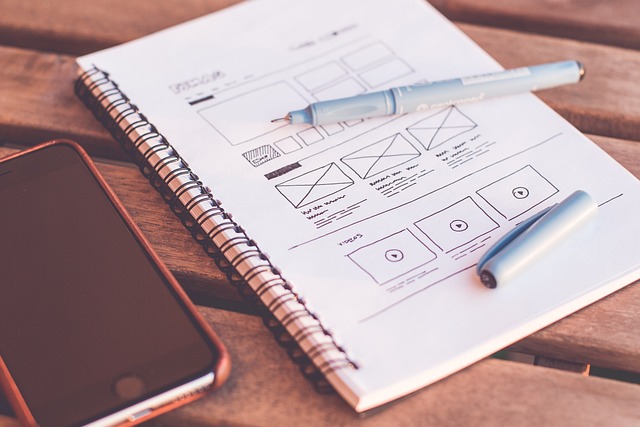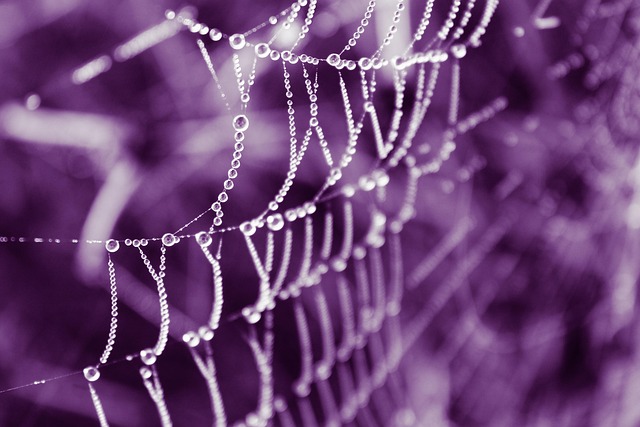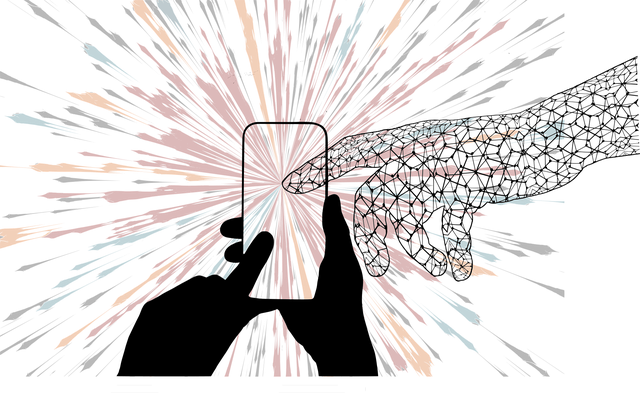In today's competitive startup ecosystem, creative web design is a powerful tool for communication and differentiation. A cohesive brand identity, built through consistent visuals, typography, and color, enhances website appeal and effectively conveys the startup's mission, building trust and strengthening online presence. Key elements include strategic color palettes that evoke emotions and align with target audiences, carefully chosen fonts for readability and aesthetics, and a well-crafted visual hierarchy to guide users' attention. Minimalist principles, high-quality images, and animations also contribute to effective creative web design, setting startups apart from competitors while fostering engagement and accessibility across various devices.
In today’s competitive startup landscape, a visually compelling brand identity is crucial for capturing attention and securing investment. Graphic and web design play pivotal roles in shaping a startup’s public image and user experience. This article explores essential design principles tailored to startups, from branding and color palettes to typography, visual hierarchy, minimalist aesthetics, and the strategic use of animation and responsive design. Uncover how creative web design can be a game-changer for attracting investors and establishing a strong online presence.
Understanding Startup Branding and Its Impact on Design

In the dynamic landscape of startups, branding is more than just a logo; it’s the visual language that communicates a company’s essence and values. Understanding this branding narrative is paramount for designers tasked with crafting creative web designs. A startup’s brand identity should resonate with its target audience, reflecting its unique selling points through consistent visuals, typography, and color schemes. This strategic approach ensures that the website not only looks appealing but also effectively conveys the startup’s mission and vision.
The impact of branding on design is profound. It guides the overall aesthetic, from choosing color palettes to designing layouts and selecting typography. A well-executed brand identity in web design not only captures the startup’s personality but also fosters a sense of trust and familiarity with visitors. This coherence builds a strong online presence, making the startup memorable and differentiating it from competitors, thereby playing a crucial role in its success story.
The Role of Creative Web Design in Attracting Investors

In the competitive world of startups, a visually appealing and innovative creative web design can serve as a powerful tool to capture investors’ attention. The digital landscape has become a crucial battleground where first impressions matter significantly. A well-designed website acts as a virtual storefront, showcasing a startup’s brand, mission, and potential. Through captivating visuals, intuitive navigation, and a unique aesthetic, creative web design can differentiate a startup from its competitors.
Investors often browse numerous startups, making their initial assessments based on online presence alone. A visually stunning and user-friendly website designed with creativity in mind can leave a lasting impression, triggering interest and curiosity. It effectively communicates the startup’s identity, values, and vision, enticing investors to delve deeper into understanding its offerings.
Choosing the Right Color Palette for Your Startup's Identity

When crafting a startup’s identity through graphic and web design, selecting the perfect color palette is a crucial step in conveying the right message and fostering brand recognition. A creative web design approach leverages colors to evoke specific emotions and create a unique visual experience. Startups should consider their target audience and the values they wish to associate with their brand when making this choice. For instance, vibrant hues can energize and excite users, while softer tones might convey professionalism and trust.
The right palette can instantly make your startup stand out in a crowded market. A well-thought-out color scheme not only enhances the visual appeal of your website or marketing materials but also ensures consistency across all platforms. This coherence strengthens brand identity, making it more memorable for potential customers. In the quest for a creative web design that captivates and engages, prioritizing color choices is a pivotal decision in building an effective startup presence online.
Typography 101: Selecting the Perfect Fonts for Startups

In the realm of graphic and web design for startups, typography plays a pivotal role in creating an engaging and professional online presence. Choosing the right fonts can significantly enhance a startup’s brand identity and user experience. The key to successful typography lies in balancing readability with aesthetics. Startups should opt for clean, modern, and easily readable fonts that align with their brand personality. San serif fonts like Helvetica or Arial often excel in this regard, offering clarity and versatility across various digital platforms.
When crafting a creative web design, consider the purpose of each font choice. Headings and titles may call for bolder, more distinctive typefaces to capture attention, while body text should be chosen for readability over visual impact. Pairing multiple fonts can add depth and interest, but it requires careful consideration to avoid clutter. Startups can create a visually appealing and cohesive design by selecting fonts that complement each other in terms of weight, style, and overall aesthetic, ultimately elevating their online presence through effective typography.
Visual Hierarchy: Organizing Content for Maximum Engagement

In the realm of graphic and web design for startups, establishing a clear visual hierarchy is paramount to guiding users’ attention and enhancing engagement. This involves strategically organizing content, from headlines to call-to-actions (CTAs), to create a natural flow that reflects the information architecture of the website or application. A creative web design approach leverages typography, color, spacing, and layout to ensure the most important elements stand out, fostering better user interaction and comprehension.
By prioritizing content based on its relevance and importance, designers can craft a visual hierarchy that mirrors the journey users take as they explore a startup’s digital presence. This not only simplifies navigation but also increases the likelihood of capturing users’ interest, encouraging them to delve deeper into the offerings of the startup. Such an organized structure is particularly crucial for startups aiming to convey complex ideas or services in a concise and appealing manner.
Incorporating Minimalist Design Principles for Efficient User Experience

In the realm of graphic and web design for startups, embracing minimalist principles can be a game-changer for creating efficient user experiences. This approach, often characterized by clean lines, limited color palettes, and succinct content, allows designers to focus on what truly matters—providing a clear path for users to navigate and interact with your startup’s digital offerings. By stripping down designs to their essentials, you eliminate visual clutter, making it easier for visitors to grasp key information and complete desired actions quickly.
Minimalist design isn’t just about simplicity; it’s about enhancing usability and accessibility. When applied thoughtfully, these principles can lead to more intuitive websites and applications. Clean layouts ensure that content remains the focal point, guiding users through a seamless journey. Moreover, minimalist designs often translate well across various devices, catering to today’s mobile-first world. This versatility is crucial for startups aiming to create a consistent brand image while reaching a diverse audience through multiple platforms, thereby fostering a more engaging and satisfying user experience.
The Power of High-Quality Images and Stock Photography

High-quality images and stock photography are essential components in creating a visually appealing and effective creative web design for startups. In today’s digital landscape, first impressions matter greatly, and captivating visuals can instantly draw users into your website. Well-chosen graphics not only enhance the overall aesthetics but also communicate your brand story and values effectively. A startup’s website is often its virtual storefront, and compelling imagery can set it apart from competitors.
When selecting stock photos or commissioned illustrations, ensure they align with your brand identity and target audience. Modern startups often strive for a unique, contemporary look, so exploring unconventional angles, vibrant colors, and abstract concepts can make your web design stand out. These visual elements can convey innovation, energy, and professionalism, leaving a lasting impression on potential customers and investors alike.
Animating Elements: Adding Life to Your Startup's Website

In the realm of graphic and web design for startups, animating elements can transform a static website into a vibrant, engaging experience. By incorporating subtle animations, startup websites gain a dynamic edge that captures users’ attention and enhances their navigation journey. This strategic use of creativity in web design not only adds visual interest but also improves user retention and interaction.
Animations should be thoughtfully implemented to align with the brand’s identity and the website’s purpose. For instance, well-timed micro-interactions can make forms more inviting or guide users’ attention to key content. As startups strive for a unique, memorable online presence, creative web design that includes animating elements becomes a powerful tool to stand out in today’s competitive digital landscape.
Responsive Design: Ensuring Your Website Works Across Devices

In today’s digital landscape, a startup’s online presence is its storefront – and first impressions matter. Creative web design isn’t just about aesthetics; it’s about crafting an experience that adapts seamlessly to every device. Responsive design ensures your website looks and functions perfectly on desktops, tablets, and smartphones, catering to the diverse ways potential customers engage with your brand. By prioritizing this approach, startups can deliver a consistent, user-friendly experience, fostering higher engagement and conversions.
A well-executed responsive design strategy leverages media queries and flexible layouts to adjust content, images, and navigation as screen sizes change. This means visitors enjoy a streamlined experience regardless of whether they’re browsing on their sleek laptop or checking your site on their compact phone during a break. Such adaptability not only boosts user satisfaction but also improves search engine rankings, making your startup more visible and accessible to a wider audience.
